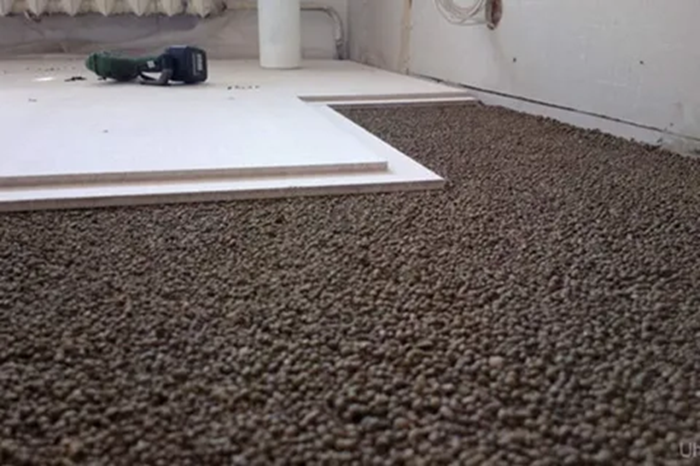The prefabricated screed consists of dry backfill and sheet flooring, is inferior in strength and reliability to concrete screeds, but can be assembled very quickly. The backfill screed is lightweight, provides additional noise and heat insulation, and its thickness can be varied within 40-100 mm.
Expanded clay gravel of a specially selected fraction (to reduce shrinkage) is best suited for leveling backfill, which is laid on top of the vapor barrier film and leveled along the beacons. Next, sheets are laid on a gypsum or cement base (most often GVLV 12.5 mm thick); they are laid in two or three layers and fastened with screws, and then the joints are putty. It is also possible to use ready-made two-layer floor elements with stepped edges.
Dry screeds made of high-density mineral wool mats and plywood are much less common. This type of construction is more expensive than a loose one and cannot be used to level the floor – it only provides additional heat and sound insulation.
Any dry screed is afraid of moisture, so it is not suitable for bathrooms and kitchens, and after a leak, most likely, it will have to be partially dismantled. The compressive strength and tear strength of the surface layer is insufficient for the use of solid wood coverings – floorboards and piece parquet. However, this is one of the best solutions for old houses with very uneven and also worn and cold floors. Dry screed is ideally combined with locking parquet boards and laminate, and also allows the installation of linoleum, carpet and large-format porcelain tiles.

